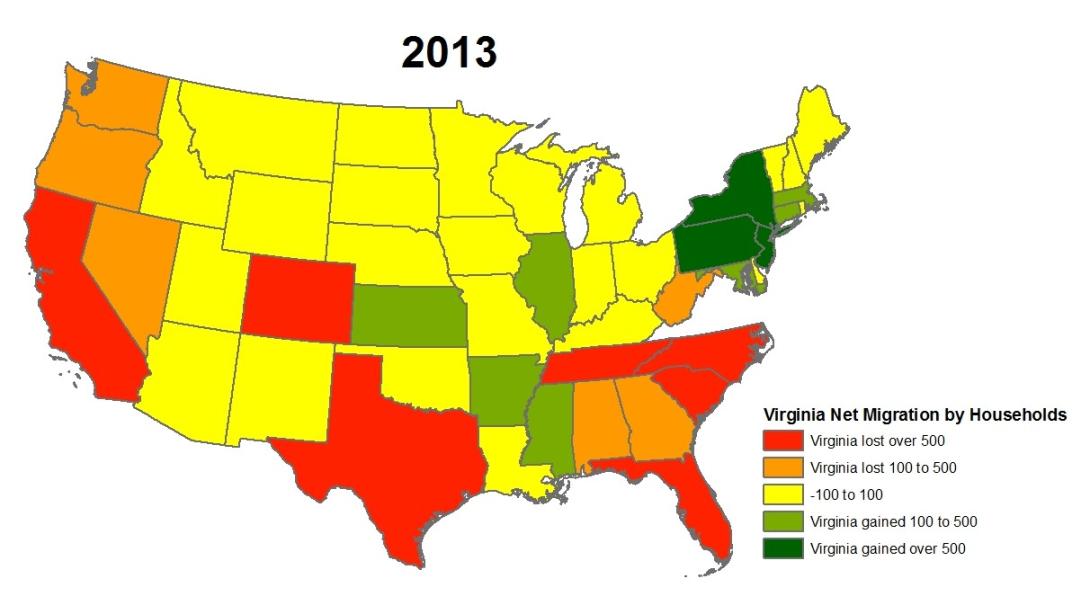Virginians are leaving the Commonwealth, reversing trends
During the decades since the second World War, Virginia’s population has been one of the fastest growing among states on the east coast. Much of Virginia’s growth was fueled by an influx of migrants coming down the BosWash corridor from the Northeast into Virginia as well as from the Mid-West. In 1940, only 5 percent of Virginia’s population was born north of the Mason-Dixon line, but by 1990 the portion had grown to 18 percent of all Virginians. Migration into Virginia was so consistent that during the entire 20+ year period that the I.R.S. has migration data available, Virginia always had more people moving in than out.

However, last month the I.R.S. released migration data for 2012 and 2013 showing that this trend may have come to an end. After having slightly more households move into the state than out in 2012, Virginia had over 3,000 more households leave the state in 2013 than moved in. I.R.S. data is particularly useful for examining these year to year migration changes since it’s based on administrative income tax data (which tracks the filers’ addresses) rather than surveys which can have high margins of error.

While there are many reasons why people may be leaving Virginia, the economy is likely one of the big ones. Though state economies have been recovering around the country in recent years, Virginia’s economic growth in 2014 was the third slowest nationally. The Federal Budget Sequestration could also be to blame, but as the chart above shows out-migration had already picked up noticeably in Virginia during the mid-2000s. People stopped moving as much during the recession, but as economies in other states have begun growing again, people who wanted to leave Virginia but couldn’t are now starting to move.

IRS Migration Data

Though migration into Virginia from the West and the Mid-West has either slowed or reversed since 2005, out-migration to Florida and much of the South increased during the period. This trend provides another reason for why Virginia is now experiencing net out-migration. Though, overall, Virginia has been successful in the past when attracting migrants, it typically loses more retirees than it gains. The 2013 I.R.S. migration data showed that 55-plus age groups contributed to the bulk of Virginia’s net out-migration. As Virginia’s large baby boomer population retires over the next decade the state could likely experience more out-migration as retirees move south or possibly back to where they grew up in the Northeast and Mid-West.


